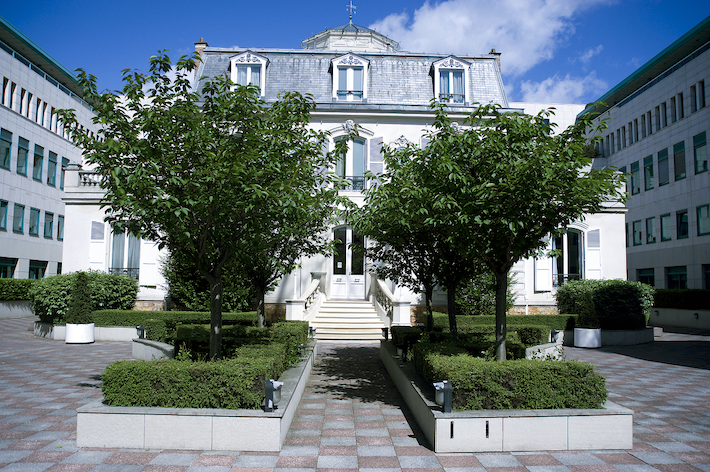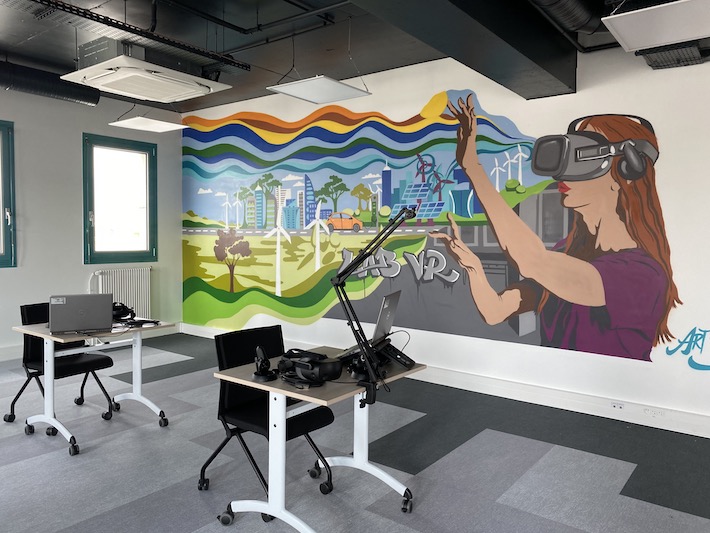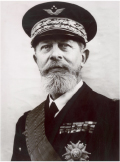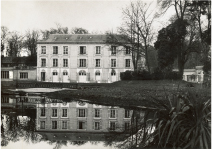| 1954 |
Creation of the École nationale supérieure du pétrole et des moteurs (ENSPM) (higher national school of oil and engines) by merging the École Nationale Supérieure du Pétrole et des Combustibles Liquides and the École Nationale des Moteurs à Combustion et à Explosion (decree dated October 13), headed by Paul Dumanois. ENSPM is tied to the Fuels Department of the Ministry of Industry. |
| 1957 |
The School moved to a new building, Dahlias, specially designed for it. It was to stay there until 1992. |
| |
 |
| 1963 |
Creation of the Center for Petroleum Economics. |
| 1975 |
To meet the industry's continuing training needs, the school created ENSPM formation industrie - IFP Training. |
| 1978 |
1st graduate research degree in Petroleum Sciences. |
| 1989 |
Creation of the 1st English-language program, in Petroleum Economics. |
| 1992 |
The School, with close to 300 students, moved into the Tamaris building.

|
|
| 1996 |
Beginning of training via apprenticeship. |
| 2002 |
Creation of 1st program as part of the dissemination policy. |
| 2008 |
Creation of the first teaching and research chair. |
|
| 2010 |
Setting up of the IFP School Facebook page and YouTube channel. |
|
| 2011 |
Launch of the School’s LinkedIn page. |
| 2012 |
Creation of the School’s annual fund, the Alumni Fund, in partnership with the Fondation Tuck. This fund is dedicated to raising private funds from IFP School graduates to finance Excellence Scholarships and innovative educational projects.
|
| 2014 |
Launch of IFP School’s Twitter account.
Launch of the MOOC “Tomorrow’s mobility: sustainable technologies for the automotive sector”, supported by TotalEnergies and the SEO. The last editions of 2018 and 2020 were also designed with the collaboration of IFP Training and Vedecom. |
| 2015 |
Launch of the MOOC “Oil and Gas: from Exploration to Distribution” on the oil and natural gas chain, in collaboration with TotalEnergies and IFP Training.
|
| 2016 |
Creation of a Advanced-master degree in Petroleum Data Management (today Geo Data Management of Energy Mix) |
| 2017 |
Creation of the Sustainable Campus Initiative, which aims to encourage and support initiatives on the IFP School campus that will help to disseminate sustainable development behaviors and best practices. |
| 2018 |
Creation of the chair on Electricity and Digital Transition (ETD) thanks to the support of the Association pour la Formation dans l’Industrie. |
| 2019 |
Creation of the chair "Electric, Connected and. Autonomous Vehicles for Smart Mobility" (ECAV). |
| March 2019 |
Launch of the MOOC “Energy Transition: Innovation Towards a Low-Carbon Future” with the support of the TotalEnergies Foundation and in association with the Fondation Tuck. |
| July 2019 |
Creation of the chair on "Carbon Management and negative CO2 emissions technologies towards a low carbon future” (CarMA) thanks to the support of TotalEnergies in association with the Fondation Tuck. |
| September 2019 |
Launch of the Master’s degree program Petroleum Projects and Offshore Technology, in partnership with the National University of Singapore.
|
| November 2019 |
New academic partnership between the Institut National Polytechnique Félix Houphouët-Boigny of Yamoussoukro (INP-HB), IFP Training and IFP School for the creation of the École supérieure du pétrole et de l’énergie (ESPE) in Ivory Coast. |
| 2020 |
Co-accreditation for the three research-oriented Master’s degree programs. |
| February 2020 |
Launch of the Master’s degree program in Oil and Gas Engineering in partnership with the Institut National du Pétrole et du Gaz (INPG) of Senegal. |
| March 2020 |
Creation of the Lab e·nov, IFP Energies nouvelles’ digital culture laboratory.

|
| October 2020 |
Launch of IFP School’s Instagram account.
Start of the academic year for the first 45 students enrolled in the brand new Master’s degree programs "Petroleum Upstream Techniques and Economics" and "Petroleum Downstream Techniques and Economics" at the École supérieure du pétrole et des énergies (ESPE) of the Institut Félix Houphouët-Boigny (INP-HB) at Yamoussoukro (Yvory Coast), in collaboration with IFP Training.
|
| November 2020 |
Launch of IFP School Voices webinars dedicated to the trends and innovations in the energy and sustainable mobility sectors. |
| Mars 2021 |
Creation of a chair focused on electrolyte thermodynamics (EleTher) thanks to the support of the Association de Formation pour l’Industrie (AFI). |
| November 2021 |
IFP School awarded the 2022 HappyAtSchool label. |
| November 2022 |
IFP School has just been awarded the "4Digital" label for digital excellence by the Conférence des grandes écoles (CGE) for four years. |
| December 2023 |
IFP School ranked 5th best engineering school in France according to the 2023 HappyIndexAtSchool. |
| January 2024 |
Launch of the Advanced-master degree - Mastère Spécialisé "Hydrogen Project and Engineering". |
| March 2024 |
Launch of the MOOC on H2 Production |



